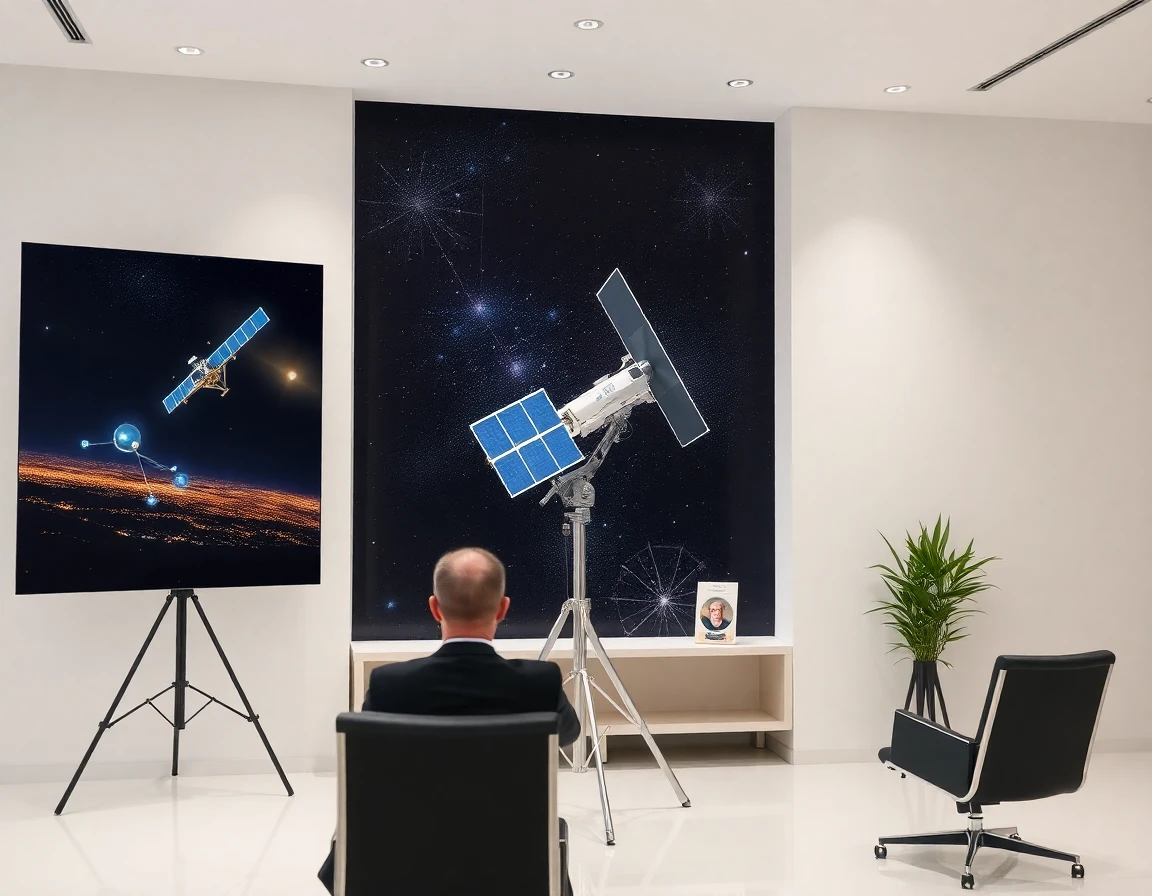In recent years, the aerospace and telecommunications sectors have witnessed a significant transformation with the advent of satellite constellations. These networks of satellites orbiting the Earth are poised to enhance global communications and internet coverage, bridging the digital divide and providing services in remote and underserved regions.
What is a Satellite Constellation?
A satellite constellation refers to a group of satellites working in concert to provide a specific service, such as global communications or Earth observation. Unlike traditional satellite systems that often rely on a few large satellites, constellations consist of dozens or even hundreds of smaller satellites deployed in low Earth orbit (LEO). This structure enables more robust and reliable coverage across the globe.
Key Players in the Satellite Constellation Arena
Companies like SpaceX, OneWeb, and Amazon are leading the charge in deploying satellite constellations. SpaceX’s Starlink has gained significant attention for its ambitious plan to launch thousands of satellites to provide high-speed internet access worldwide. As of late 2023, Starlink has successfully deployed over 3,000 satellites, with plans for many more to enhance service quality and reduce latency.
OneWeb, another prominent player, has launched over 600 satellites as part of its strategy to provide internet connectivity across the globe, particularly in rural and remote areas. Amazon’s Project Kuiper aims to deploy a constellation of 3,236 satellites to offer broadband services, further intensifying the competition in the satellite internet marketplace.
Technical Specifications and Innovations
Satellite constellations leverage advanced technologies to deliver high-speed internet services. For instance, many of these satellites operate in LEO, ranging from 180 km to 2,000 km above the Earth, which significantly reduces latency compared to traditional geostationary satellites that orbit at approximately 35,786 km.
In addition to the altitude, the design of these satellites is crucial for their performance. Many of them are equipped with advanced optical communication systems. For example, the DBY011550M System, a lithium niobate optical chip, integrates essential components like a polarizer, splitter, and phase modulator, enhancing signal processing and transmission capabilities. This technology is pivotal in improving the efficiency and speed of data transmission across satellite networks.
Industry Context and Analysis
The satellite communication industry is experiencing a paradigm shift. Analysts estimate that the global satellite communication market will surpass $100 billion by 2025, driven by the increasing demand for data services and the proliferation of IoT devices. Satellite constellations play a vital role in this growth, enabling connectivity in areas where terrestrial internet infrastructure is lacking or non-existent.
According to Dr. Emily Sanchez, a senior analyst at the Aerospace Technology Institute, “The expansion of satellite constellations is not just about connectivity; it’s about creating a more equitable digital landscape. By providing internet access to remote areas, we can empower communities and stimulate economic growth.”
Potential Impacts on Society
The implications of widespread satellite internet access are profound. From enabling telehealth services in rural communities to supporting distance learning for students in remote regions, satellite constellations have the potential to transform lives. Furthermore, industries such as agriculture can benefit from improved data connectivity, allowing for better resource management and crop monitoring.
However, the rapid deployment of these satellites also raises concerns regarding space debris, spectrum management, and the sustainability of space operations. As the number of satellites increases, so does the risk of collisions in orbit, which could have catastrophic consequences for both space operations and the Earth.
Future Developments in Satellite Constellations
Looking ahead, the future of satellite constellations is bright but comes with challenges. Companies are exploring innovative solutions to mitigate space debris, such as deorbiting satellites at the end of their life cycle and developing technologies for active debris removal.
Moreover, regulatory frameworks will need to adapt to this rapidly evolving landscape. International cooperation will be crucial to ensure that satellite constellations can operate safely and sustainably while providing the services that the world increasingly relies upon.
Conclusion: The Sky’s the Limit
Satellite constellations are reshaping the landscape of global communications, enabling unprecedented access to the internet and fostering innovation across various sectors. As technology advances and more players enter the market, the potential for satellite networks to change the world is immense. By leveraging cutting-edge technologies, such as the DBY011550M System, the industry is poised not only to enhance connectivity but also to address some of the most pressing challenges of our time. As Dr. Sanchez aptly puts it, “We are only at the beginning of a new era in communications, and the sky is literally the limit.”



